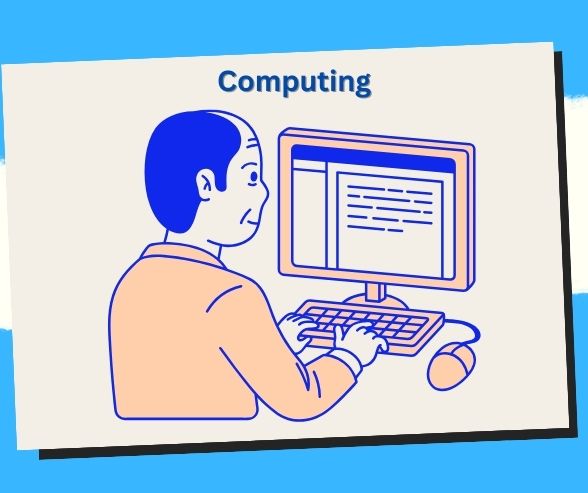
Revolutionize Retail Inventory Management with Edge Computing Solutions
Discover how edge computing revolutionizes retail inventory management, driving efficiency and profitability.
Unleash the Power of Edge Computing in Retail Inventory Management 

In the rapidly evolving world of retail, staying ahead of the curve is essential. With the emergence of edge computing, retailers now have a powerful tool at their disposal to optimize inventory management like never before. Edge computing allows data processing to occur closer to the source of data generation, enabling real-time insights and actions. In this guide, we’ll delve into how you can integrate edge computing into your retail inventory management strategy, unlocking efficiency, accuracy, and agility.
Understanding Edge Computing in Retail Inventory Management
What is Edge Computing?
Edge computing refers to the practice of processing data near the edge of the network, closer to the data source rather than relying on a centralized data processing warehouse. This allows for faster data processing, reduced latency, and more efficient use of network resources.
Why Edge Computing for Retail Inventory Management?
In the realm of retail, where time is money, leveraging edge computing can revolutionize inventory management processes. By analyzing data at the edge of the network, retailers can gain real-time insights into inventory levels, demand patterns, and supply chain dynamics, enabling proactive decision-making and enhanced customer experiences.
Implementing Edge Computing in Retail Inventory Management
1. Identify Key Areas for Edge Computing Integration
Before diving into implementation, assess your inventory management workflow to identify areas where edge computing can make the most impact. This could include inventory tracking, demand forecasting, shelf replenishment, or even customer engagement through personalized offers based on real-time inventory data.
2. Choose the Right Edge Computing Infrastructure
Selecting the appropriate edge computing infrastructure is crucial for success. Consider factors such as scalability, reliability, and compatibility with existing systems. Cloud-based edge computing solutions offer flexibility and scalability, while on-premises solutions provide greater control over data security and compliance.
3. Integrate Edge Devices and Sensors
Deploy edge devices and sensors across your retail environment to collect real-time data on inventory levels, customer foot traffic, and environmental conditions. These devices act as the eyes and ears of your edge computing infrastructure, providing valuable insights for inventory management decisions.
4. Leverage Edge Analytics for Real-Time Insights
Utilize edge analytics to process data at the edge of the network and derive actionable insights in real time. By analyzing data locally, you can minimize latency and respond swiftly to changing market conditions, optimizing inventory levels and minimizing stockouts.
5. Implement Predictive Analytics for Demand Forecasting
Incorporate predictive analytics algorithms into your edge computing framework to forecast demand accurately. By analyzing historical sales data, market trends, and external factors such as weather patterns, you can anticipate customer demand with precision, reducing excess inventory and minimizing losses due to stockouts.
6. Automate Inventory Replenishment Processes
Automate inventory replenishment processes using edge computing and IoT-enabled devices. By setting predefined thresholds for inventory levels, you can trigger automated replenishment orders in real time, ensuring shelves are stocked and customer demands are met efficiently.
7. Enhance Customer Experiences with Personalized Offers
Harness the power of edge computing to deliver personalized offers and recommendations to customers based on their browsing and purchasing behavior. By analyzing real-time data on customer preferences and inventory availability, you can tailor promotions and discounts to individual customers, driving sales and fostering loyalty.
Overcoming Challenges and Considerations
Data Security and Privacy
Ensure robust security measures are in place to protect sensitive data collected and processed at the edge of the network. Implement encryption protocols, access controls, and data anonymization techniques to safeguard customer information and maintain compliance with data protection regulations.
Network Connectivity and Reliability
Address potential challenges related to network connectivity and reliability when deploying edge computing solutions. Consider implementing redundant connectivity options and backup systems to ensure uninterrupted data processing and mitigate the risk of downtime.
Scalability and Flexibility
Plan for scalability and flexibility when designing your edge computing infrastructure. As your retail operations grow and evolve, ensure your edge computing framework can adapt to changing demands and accommodate future expansion seamlessly.
Integrating edge computing into retail inventory management
It holds immense potential for streamlining operations, enhancing efficiency, and delivering superior customer experiences. By leveraging real-time data insights at the edge of the network, retailers can stay ahead of the competition and thrive in the dynamic retail landscape. Embrace the power of edge computing today and revolutionize your retail inventory management strategy for success tomorrow!
Benefits of Integrating Edge Computing into Retail Inventory Management
- Real-Time Inventory Insights: Gain instant visibility into stock levels, enabling proactive decision-making and reducing stockouts.
- Enhanced Accuracy: Minimize errors and discrepancies with precise, automated inventory tracking at the edge.
- Improved Customer Satisfaction: Ensure products are readily available, leading to happier customers and increased loyalty.
- Optimized Supply Chain: Streamline logistics by analyzing data closer to the source, reducing delays and improving efficiency.
- Cost Savings: Reduce labor costs associated with manual inventory checks and minimize overstocking or understocking.
- Data Security: Protect sensitive inventory data by processing it locally, mitigating risks associated with cloud-based solutions.
- Scalability: Seamlessly expand operations without compromising performance, thanks to the distributed nature of edge computing.
- Personalized Marketing: Leverage real-time insights to tailor marketing strategies and promotions based on inventory trends.
- Faster Decision-Making: React swiftly to market fluctuations and consumer demands with up-to-the-minute inventory data.
- Competitive Advantage: Stay ahead of the curve by adopting innovative technologies that revolutionize retail operations.
Case Studies: Real-Life Success Stories
- Tech Retailer Transformation: By implementing edge computing, a leading tech retailer reduced inventory discrepancies by 30% and improved order fulfillment times by 20%.
- Fashion Forward: A fashion brand integrated edge computing into its inventory management system, resulting in a 15% increase in sales due to improved product availability.
- Grocery Chain Efficiency: A regional grocery chain optimized its supply chain with edge computing, reducing transportation costs by 25% and minimizing food waste.
- Electronics Giant: A multinational electronics company leveraged edge computing to enhance inventory accuracy, resulting in a 40% reduction in stockouts and a 20% decrease in excess inventory.
- Luxury Retailer Success: A luxury retailer improved customer satisfaction by 25% after implementing edge computing, ensuring high-demand items were always in stock.
- Home Improvement Hero: A home improvement retailer boosted profitability by 18% through optimized inventory management powered by edge computing technology.
- Pharmaceutical Efficiency: A pharmaceutical distributor reduced stock expiration rates by 50% by leveraging real-time inventory insights provided by edge computing.
- Sporting Goods Success: A sporting goods retailer streamlined its supply chain and improved product availability, resulting in a 10% increase in customer foot traffic.
- Automotive Advantage: An automotive parts supplier minimized inventory holding costs and improved order accuracy by implementing edge computing solutions.
- Cosmetics Company: A cosmetics company enhanced its omnichannel retail strategy by integrating edge computing, leading to a 30% increase in online sales and in-store foot traffic.
Key Takeaways
- Embrace Innovation: Don’t shy away from adopting new technologies like edge computing to drive business growth.
- Prioritize Data Security: Ensure robust security measures are in place to protect sensitive inventory data.
- Focus on Real-Time Insights: Leverage the power of edge computing to make data-driven decisions on the fly.
- Customize Solutions: Tailor inventory management systems to meet the unique needs of your retail operation.
- Collaborate Across Departments: Involve stakeholders from various departments to ensure successful implementation and adoption.
- Continuous Improvement: Regularly evaluate and refine inventory management processes to stay competitive.
- Invest in Training: Provide adequate training and support to staff to maximize the benefits of edge computing technology.
- Stay Agile: Adapt quickly to changing market dynamics and consumer preferences with real-time inventory data.
- Monitor Performance: Continuously monitor the performance of your inventory management system to identify areas for improvement.
- Strive for Excellence: Aim for excellence in retail operations by leveraging cutting-edge technologies like edge computing.
FAQ
Q1: What is edge computing, and how does it differ from cloud computing?
A1: Edge computing involves processing data closer to the source, reducing latency and enabling real-time insights, whereas cloud computing relies on centralized data centers.
Q2: Is edge computing suitable for all types of retail businesses?
A2: Yes, edge computing can benefit various retail sectors, including fashion, electronics, grocery, and automotive, among others.
Q3: How does edge computing enhance inventory accuracy?
A3: By processing data at the edge, edge computing minimizes delays and errors associated with traditional inventory management systems, resulting in improved accuracy.
Q4: Can edge computing help reduce operational costs?
A4: Absolutely! By optimizing inventory management processes and reducing inefficiencies, edge computing can lead to significant cost savings for retailers.
Q5: What are the security implications of edge computing in retail?
A5: While edge computing offers benefits such as data localization, retailers must implement robust security measures to protect against potential vulnerabilities at the edge.
Q6: Is edge computing scalable for growing retail operations?
A6: Yes, edge computing is highly scalable, allowing retailers to expand their operations seamlessly without compromising performance.
Q7: How does edge computing impact customer experiences?
A7: By ensuring products are readily available and personalized marketing strategies, edge computing enhances customer satisfaction and loyalty.
Q8: Can edge computing integrate with existing inventory management systems?
A8: Yes, edge computing solutions can be seamlessly integrated with existing systems to enhance functionality and efficiency.
Q9: What role does data analytics play in edge computing for retail inventory management?
A9: Data analytics is crucial for deriving actionable insights from real-time inventory data processed at the edge, enabling informed decision-making.
Q10: What are the long-term benefits of adopting edge computing in retail?
A10: Long-term benefits include improved operational efficiency, enhanced competitiveness, and future-proofing retail businesses against technological advancements.
Conclusion

Key Phrases
- Edge computing in retail
- Retail inventory optimization
- Inventory management solutions
- Retail logistics efficiency
- Edge computing technologies
- Inventory control systems
- Retail productivity enhancement
- Future-proof retail operations
- Agile inventory management
- Retail inventory efficiency
Best Hashtags
- #EdgeComputing
- #RetailTech
- #InventoryManagement
- #RetailInnovation
- #RetailLogistics
- #FutureOfRetail
- #TechIntegration
- #EfficientInventory
- #AgileRetail
- #RetailOperations
Save/Share this story with QR CODE
Disclaimer
This article is for informational purposes only and does not constitute endorsement of any specific technologies or methodologies and financial advice or endorsement of any specific products or services.
 Need to get in touch?
Need to get in touch?

We appreciate your reading. 
1.) 

Your DONATION will be used to fund and maintain NEXTGENDAY.com
Subscribers in the Philippines can make donations to mobile number 0917 906 3081, thru GCash.
3.) 
4.) 
AFFILIATE PARTNERS

World Class Nutritional Supplements - Buy Highest Quality Products, Purest Most Healthy Ingredients, Direct to your Door! Up to 90% OFF.
Join LiveGood Today - A company created to satisfy the world's most demanding leaders and entrepreneurs, with the best compensation plan today.

 Business, Finance & Technology
Business, Finance & Technology














 Unleash the Future: How Quantum Computing + 5G Will Transform Everything
Unleash the Future: How Quantum Computing + 5G Will Transform Everything 


